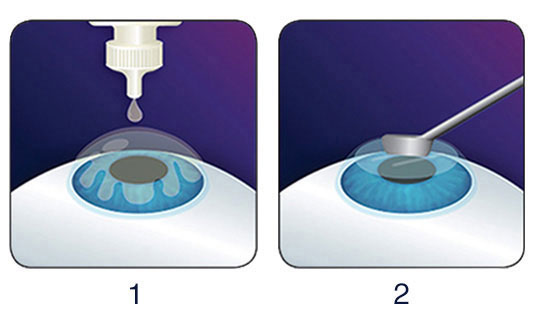With the Lasek, also called PRK, the corneal layer cover (flap) is not folded away, but the superficial corneal layer is completely removed. This is followed by the actual laser treatment. Finally, a protective lens is inserted, which is removed again as soon as the cornea’s own layer has formed.
This surgical method is mainly used for patients with a low corneal layer thickness (flaps). This Lasik method is, therefore, only recommended for patients with the problem described above.


PRK with Wavefront
Here, the same examination procedure is used as in wavefront LASIK or iLasik (step 1), i.e., the “genetic fingerprint” of the eye is individually determined by wavefront 3D measurement analysis and taken into account in the treatment of the cornea. The only difference in this method is the treatment of the corneal layer. With PRK, the corneal layer cover (flap) is not folded away, but the superficial corneal layer is removed or detached because it is very thin. This is followed by the actual laser treatment. Finally, a protective lens is used, which is removed again as soon as the cornea’s own layer has formed also.
This surgical method is mainly used for patients with a low corneal layer thickness (flaps). This Lasik method is not “old” but can only be used if you have a thin horny layer! PRK Lasek method is therefore only recommended for patients who want a thin horny layer or scar-free LASIK.
PRK without Wavefront
If you are not suitable for a wavefront measurement, PRK-LASIK is used without a wavefront 3D measurement. PRK minimizes the risks during the creation of the corneal flap.
The doctors we refer you to will be happy to inform you about the further possibilities.
Only disposable articles are used for all laser treatments. This reduces the risk of infection to zero.




